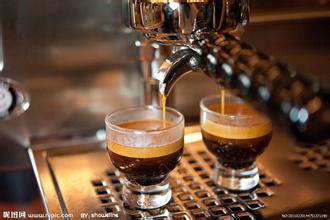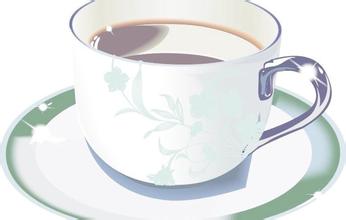Introduction of high-quality coffee beans from Manor Manor, Indonesia with rich texture.
Cat poop coffee is produced from the feces of Indonesian coconut cats (a kind of civet cat), so it is called "cat poop coffee". This kind of animal mainly feeds on coffee beans. After fermentation in coconut cat stomach, protein is destroyed, short peptides and more free amino acids are produced, the bitter taste of coffee will be reduced, and the feces discharged will be the main raw material. Since coffee beans cannot be digested, they will be excreted. After washing and baking, they become cat feces coffee. Coffee critic Chris Rubin said,"The bouquet is so rich and intense, and the coffee is incredibly rich, almost syrupy. The thickness and chocolaty texture of it, and lingering on the tongue for a long time, pure aftertaste."
Coconut cats are omnivorous animals. In addition to eating seeds, they also eat insects, snakes, birds, amphibians and reptiles.[2][3] Therefore, the feces discharged by real wild coconut cats will be mixed with various substances. Indonesian local farmers catch coconut cats to raise and feed coffee beans to make them. However, there was still a certain difference between artificial cultivation and natural cultivation.
Cat poop coffee bean yield
Cat poop coffee production is very small, and therefore particularly expensive. And there are even fewer places for sale. It is rare even in Indonesia, where it originated. Therefore, the cat feces coffee sold on the market is mostly artificially raised. The coffee bean flavor is naturally different from the most primitive and natural wild cat feces coffee. Mandheling produced in Sumatra mountains is world-famous and rich in texture. Sumatra and East Africa's wine-like taste contrast, Indonesia and New Guinea beans show another flavor, with sticky texture, acid buried in the complex taste, dark and intense herbal or wild mushroom flavor, and deep throat three days of sweet aftertaste. They can play the bass role in the complex. Mandheling and Ankola, grown in the mountains near Padang in west-central Sumatra, are considered by many to be the richest coffees in the world, with Mandheling being the most famous and Lindong Lindong Mandheling the most acclaimed. The beans are semi-washed, i.e. dried and then washed with hot water to remove the dried pulp. This gives the beans the attractive earthy taste of dried beans while maintaining their neat quality. Aged Sumatra is a specially treated bean. Raw beans are stored in the producing area for three to more than ten years before they are marketed, which makes it less acidic, less aromatic, more mellow in taste, thick and syrupy in texture, thick but not abundant, which can be said to be Pu 'er tea in coffee. The northwestern tip of Sumatra also has a washed coffee called Gayo mountain, a variety of trees. It's cleaner than mantelin and has a clear herbal flavor.

Important Notice :
前街咖啡 FrontStreet Coffee has moved to new addredd:
FrontStreet Coffee Address: 315,Donghua East Road,GuangZhou
Tel:020 38364473
- Prev

Charming flavor Panamanian coffee Flavor Taste Manor Region Features Fine coffee beans Introduction
Finca Nuguo Estate is a unique coffee house with a unique location and unique flavor. In addition to some special coffees that won senior competitions, the beans used in the 2016 American Barista Champion Lemuel Butler Competition came from this house. Finca Nuguo Estate is located in Chiriqu, western Panama, close to the Costa Rican border. here
- Next

Introduction to the characteristics and varieties of the top boutique coffee Jamaica Blue Mountain Coffee Flavor and taste Manor
(Portland) and St. Thomas (StThomas) producing areas. In eight years, Jamaica exported more than 375 tons of pure coffee. In 1932, coffee production reached its peak and more than 15000 tons of coffee was harvested. But by 1948, the quality of coffee had declined and Canadian buyers refused to renew their contracts, so the Jamaican government set up a coffee industry committee to save top coffee.
Related
- Detailed explanation of Jadeite planting Land in Panamanian Jadeite Manor introduction to the grading system of Jadeite competitive bidding, Red bid, Green bid and Rose Summer
- Story of Coffee planting in Brenka region of Costa Rica Stonehenge Manor anaerobic heavy honey treatment of flavor mouth
- What's on the barrel of Blue Mountain Coffee beans?
- Can American coffee also pull flowers? How to use hot American style to pull out a good-looking pattern?
- Can you make a cold extract with coffee beans? What is the right proportion for cold-extracted coffee formula?
- Indonesian PWN Gold Mandrine Coffee Origin Features Flavor How to Chong? Mandolin coffee is American.
- A brief introduction to the flavor characteristics of Brazilian yellow bourbon coffee beans
- What is the effect of different water quality on the flavor of cold-extracted coffee? What kind of water is best for brewing coffee?
- Why do you think of Rose Summer whenever you mention Panamanian coffee?
- Introduction to the characteristics of authentic blue mountain coffee bean producing areas? What is the CIB Coffee Authority in Jamaica?

